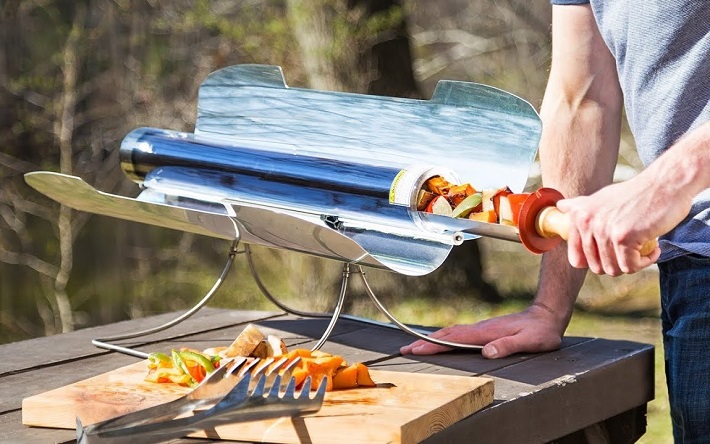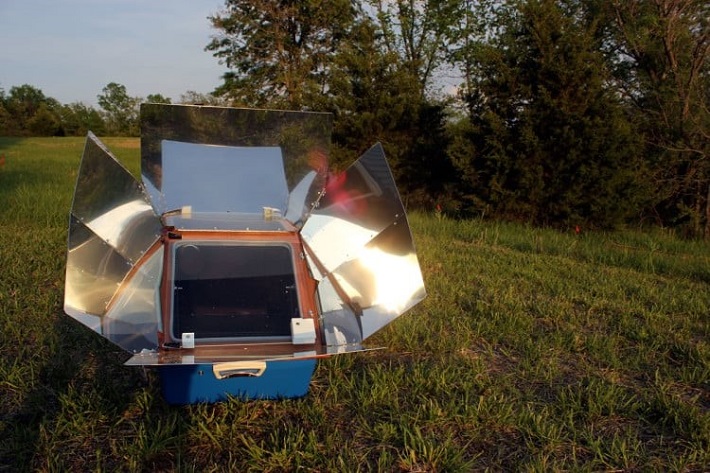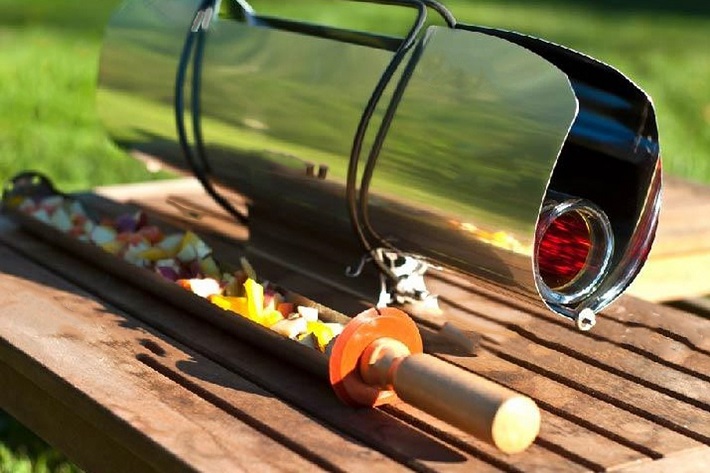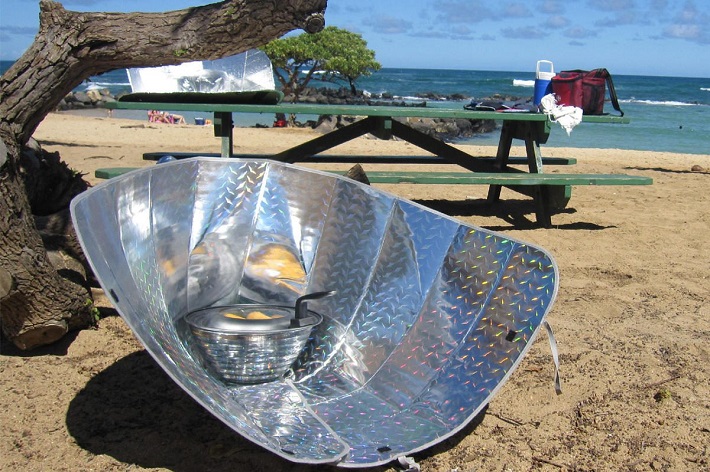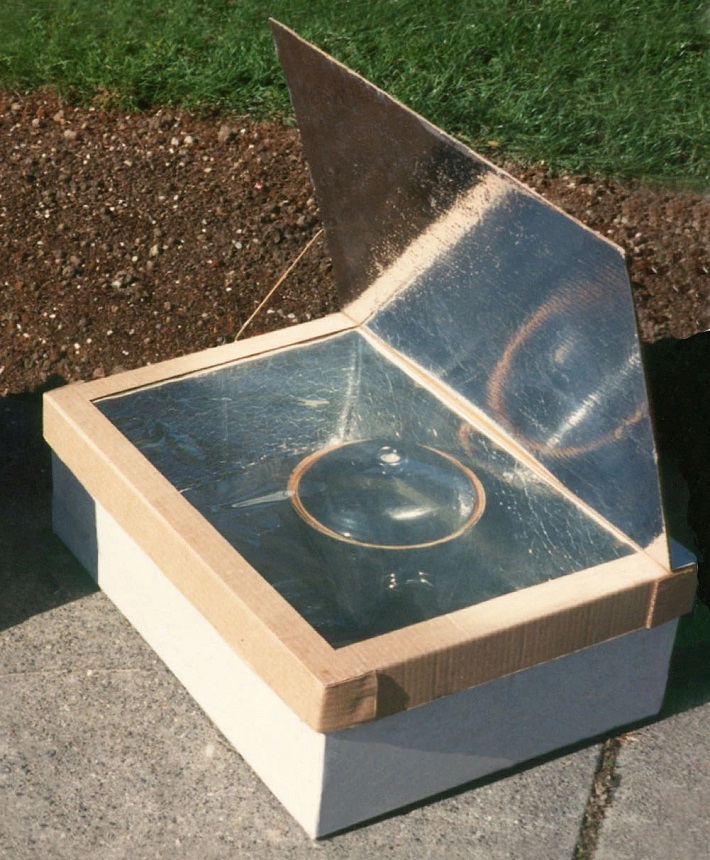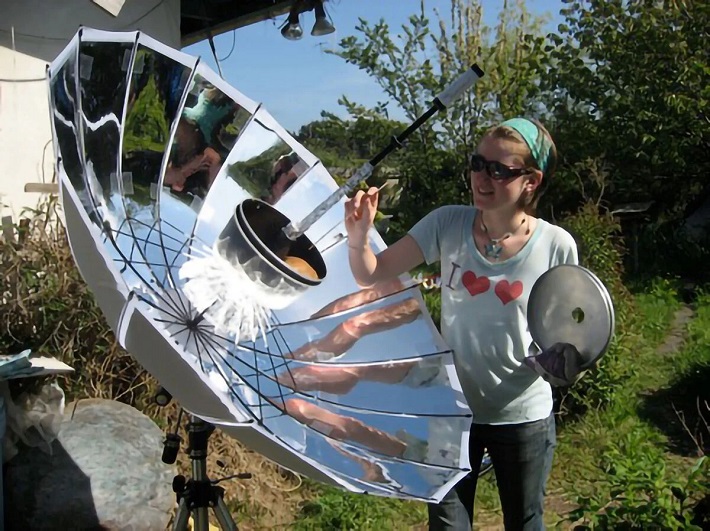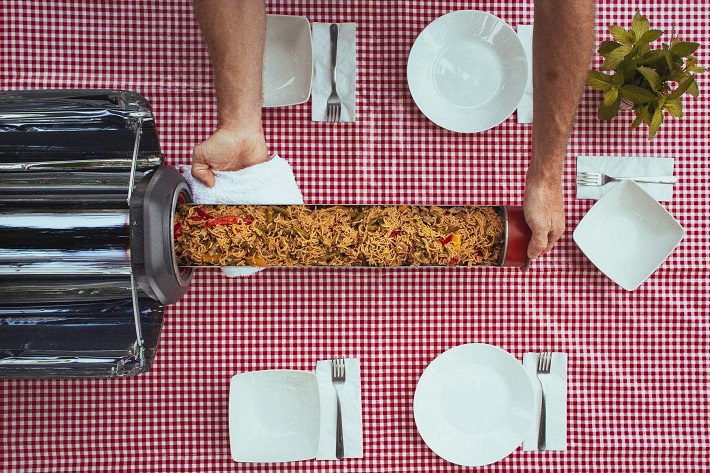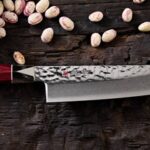RV solar panels, rechargeable batteries, and mobile devices aren’t the only way to harness the power of the sun. More and more campers are discovering the art of solar cooking, which can be a game-changer when it comes to meal preparation. That’s why a great majority of them can’t imagine their camping trip without the convenience of a solar cooker anymore.
These devices gather and concentrate solar energy to cook food. They do come in a variety of shapes, but they typically generate temperatures high enough to cook almost any type of food by using reflecting surfaces, glass, and other heat-absorbing materials. In this regard, solar ovens must retain heat well for stable cooking, which is frequently done by separating the air within the oven or other cooking utensils from the air outside. For that reason, the majority of solar ovens won’t work at night or in cloudy conditions.
The Benefits of Using Solar Ovens for Camping
Forget about canned food and enjoy stress-free and delicious cooked meals on your trip with a highly efficient solar oven that is made to last. Besides unlocking the power of solar cooking, these devices offer a plethora of other benefits.
Economical
Although costly, premium solar cookers are quite effective once you buy them. Solar cookers have long-term cost savings since they eliminate the cost of cooking fuel after the initial purchase price. And, not to mention that there are also campers that use commonplace objects like pizza boxes, plastic wrap, and aluminium foil to create DIY alternatives.
Safe
Ovens operating on solar energy are a fantastic alternative for your camping cooking aspirations because they operate without electricity. They are especially in handy in instances where there may be prolonged power outages and as part of hurricane preparedness packs. Moreover, a solar oven is far safer than burning wood or other materials because it doesn’t require a fire.
Eco-Friendly
Solar power is a renewable source of energy. Compared to non-renewable sources like wood and fossil fuels, using this energy source to prepare meals has less of an impact on the environment. Given that no wood is burned, and no petrochemicals are converted into fuel, using sunlight to generate heat results in less air pollution and less deforestation.
How to Choose the Best Solar Oven for Camping?
Solar cooking has been around for decades, and nowadays solar ovens come in different shapes and sizes and are made from different materials. If you’re new to all this and just trying to figure out how to choose the best solar cooker for all your camping cooking goals, the following guidelines might give you a hand.
Pick the Type that Suits Your Needs
To choose the best solar cooking oven, you must first decide what you want to cook the most. If a thermometer is not built into the design of the oven, it is ideal to have one for all types of ovens. On the other hand, if you intend to take your solar oven on the road, some ovens are significantly lighter and easier to move than others. However, these are the most common solar ovens on the market.
Evacuated Tube Cookers
Despite being relatively new on the market, evacuated tube cookers are swiftly taking over as everyone’s favourite. The glass tube may attain temperatures of 550°F (290°C) or higher since it is made of a sizable, evacuated glass tube that is encircled by shining reflector panels. The pot heats up sufficiently to prepare meat, bread, veggies, and dessert.
Although evacuated tube cookers are still solar cookers and require sunshine to operate, they are still effective even in cloudy weather.
Panel Oven
Panel ovens are constructed from reflective panels which direct energy toward a cooking source. They are often portable and light, making them perfect for people who are constantly on the move. Nevertheless, they are less efficient for longer cook times because they can’t attain the same temperatures as box and parabolic ovens.
Work with a dark pan or glass jars that have been painted black while utilizing these ovens. You can place the cooking vessels in a sealed oven bag to further concentrate the heat.
Box Oven
Reflective boxes with a clear lid surface are used to create box ovens. They frequently have the biggest cooking space and can normally accommodate the simultaneous preparation of numerous pots of food. However, because they cannot collapse, they are typically not very portable. Still, for baking, cooking beans, or other meals that need a longer cooking time, these solar ovens are excellent.
Parabolic Oven
The most effective solar ovens are parabolic ones because they are geometrically constructed to concentrate solar energy at a single point.
Only one vessel may be cooked at a time in parabolic ovens, which are cumbersome to move. However, these are the most potent solar ovens on the market, capable of 400 F temperatures. They can even bake bread and cook food more quickly than traditional ovens. When utilizing a parabolic oven, keep in mind that the parabola needs to be moved around as the sun moves throughout the day for easy and fast cooking.
Consider the Type of Food You Will Be Cooking
After picking the right model, you may begin wondering, “What can you do with a solar oven?” We have some great news here as solar cookers can be used to cook almost any type of food that comes to your mind. Food staples like meat and vegetables, as well as fruits, eggs, and fish, are simple to prepare. But you can also bake bread, cakes, soufflés, and a variety of other things in a solar oven.
Campground cooks can prepare soups and stews, pasta, rice, and beans with boiling water. Even baking brownies and cookies is an option. In essence, everything you can cook in a conventional oven or stove, you probably can make it in a solar cooker as well.

